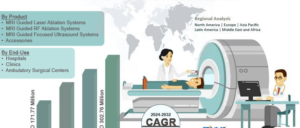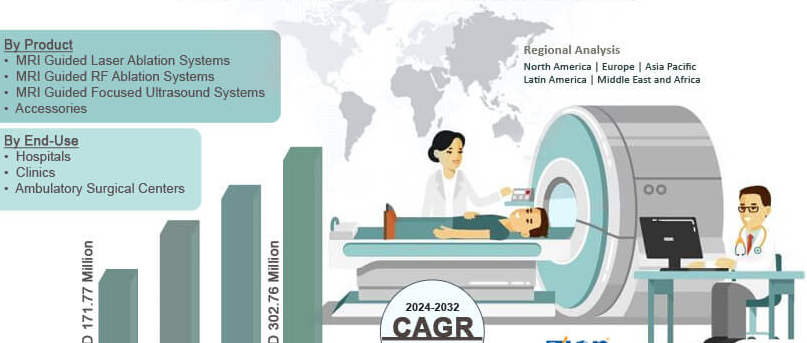Challenges and Advances in MRI-Guided Neurosurgical Ablation: Thereby, while innovation and obstacles are at play with this new kind of precision medicine, the field of MRI-guided neurosurgical ablation is slowly reaping fundamental changes in brain surgery. Advanced imaging has been undertaken to enhance precision in the critical zone approach. Improvement in outcomes is definitely noticed, but the challenges range from technical to ethical in the clinical setting.
MRI-guided ablation techniques are further developed with technological advancements, opening more horizons in treatment for tumors and epilepsy, among other conditions. Knowing the process behind such innovation could further enhance efficacy and safety. MRI integration into surgery has been serving not just the purpose of visualization but also real-time monitoring, crucial for successful interventions.
Full realization of improving patient care remains to be achieved, hence the need for navigating through extant challenges. The exploration into what the current state of the field is and where it is headed reveals what may be expected in the future.
Key Takeaways
- The MRI guidance enhances surgical precision in brain procedures.
- New technologies improve treatment options for neurological conditions.
- Addressing challenges will be key to advancing MRI-guided therapies.
Principles and Mechanisms of MRI-Guided Neurosurgical Ablation
MRI-guided neurosurgical ablation employs the very latest in imaging for accurate, precise targeting and destruction of unwanted tissue in the brain. Such a process combines real-time imaging with focused energy delivery for effective results while sparing surrounding areas of damage.
The Science Behind High-Intensity Focused Ultrasound
MRI-guided ablation is based mainly on one important technology: High-Intensity Focused Ultrasound. High-Intensity Focused Ultrasound concentrates sound waves on a very tiny point within the tissue. Temperatures increase to as much as 60-90°C. This heat destroys cells and tissue.
That’s the accuracy that enables HIFU to function on tumors or abnormal tissue at an affected site. MRI navigates the ultrasound focus with crisp images to make certain that the correct tissue is treated. Patients benefit by reduced recovery times and less trauma compared to traditional surgery.
Real-Time Imaging and Ablation Monitoring
Real-time imaging is important in MRI-guided ablation. MRI in real time will provide feedback to the surgeon concerning the progress of the procedure. This encompasses dynamic imaging, which will be used if there is a need to make adjustments in parameters.
Monitoring ablation involves looking out for the immediate temperature and other tissue effects of the treatment. More precisely, by using thermal imaging, the surgeon is able to view how much the tissue is taking up the energy of ultrasound. This becomes quite useful for the surgeon to retain the ablation within the safe limits.
Thermal Dose and Tissue Response
In ablation, thermal dose is the amount of heat applied to tissues. Tissues respond differently to such heat. Factors such as exposure time, temperature, and type of tissue all have their bearing on how the cells react.
A higher thermal dose has the tendency to destroy the targeted cells much faster. On the other hand, however, it will damage the healthy tissues and those that are located around the target tissue. Thus, their careful planning is required to optimize treatment results and minimize the risk involved. Understanding these responses is key to effective neurosurgical outcomes.
Clinical Applications and Technological Innovations
Recent development of MRI-guided neurosurgical ablation has brought considerable improvements in treating a series of pathologies. These innovations enable precise targeting of lesions while reducing damage to the surrounding tissue. The following subsections give an overview of some important applications and technological advances made in the area of interest.
Brain Tumor Targeting and Treatment
MRI-guided ablation techniques offer high accuracy when it targets brain tumors. It employs real-time imaging to locate the exact position of the tumor. Surgeons can adopt modifications in approach according to the size and position of the tumor for effective treatment.
These include laser, radiofrequency, and microwave ablation. All of these procedures have their benefits; therefore, treatment plans can be custom fit to the individual. The goal is to destroy tumor cells and preserve healthy brain tissue to reduce complications and recovery time.
Many of these treatments are carried out on an outpatient basis, further adding to the convenience of the patient. Continuous monitoring during the procedure enhances safety and treatment effectiveness.
Advances in the Treatment of Movement Disorders
MRI-guided ablation has also shown promise in the treatment of movement disorders such as Parkinson’s disease. Targeted ablation can disrupt faulty brain circuitry that causes tremors and other symptoms, offering an option for patients who do not respond to medications.
By determining the precise area within the brain that is responsible for the symptom, surgeons can accurately deliver the treatment. Real-time MRI allows for correct targeting and minimizes many of the risks of the conventional surgical procedure. Many patients often find immediate relief from their symptoms once treatment has taken place.
Clinical evidence suggests that long-term efficacy can actually benefit a significant number of patients. Long-term and with the development of technology, even more patients may have access to such effective treatments.
Overcoming the Challenges of Skull Density and Acoustic Properties
One complication is skull density. The densities are different in every patient, and that may affect the quality of the imaging. This is one very important factor because proper targeting is highly dependent on that. Such factors must be put into consideration to avoid mistakes by surgeons while carrying out the procedure.
Another complication is the acoustic properties. When energy is transmitted through various tissues, it causes heating up and damage to tissues not targeted. When carrying out the procedure, interaction of sound waves with the skull is one very important factor in improving safety.
Ongoing research aspires to refine techniques that can compensate for these challenges. Innovations in patient-specific modeling can also enhance the outcome of a procedure.
Integration with Robotic Surgery
Robotic surgery is increasingly integrated with MRI-guided techniques. This provides immense benefits concerning precision and control over the procedures. Robotics can automate certain tasks to give more freedom for the surgeon to address critical areas that need attention.
Robotic systems also ensure consistency in performance, reducing the possibility of human error. They allow for much smoother movements, and this is quite crucial in handling those fine brain procedures. With technology ever-evolving, integrations have the potential to greatly improve patient outcomes.
The collaboration between robotics and MRI-guided ablation is on a high rise. This marriage has also potentially opened new avenues for more complicated surgeries and will, in turn, benefit people with difficult conditions.

Also Read :
- Integration of MRI and Robotics in Neurosurgical Procedures
- MRI in Neurosurgical Evaluation of Spinal Tumors
- Functional MRI for Neurosurgical Planning in Brain Tumor Surgery
- Intraoperative MRI and the Future of Neurosurgical Navigation
- MRI for Spinal Cord Injury and Neurosurgical Treatment
